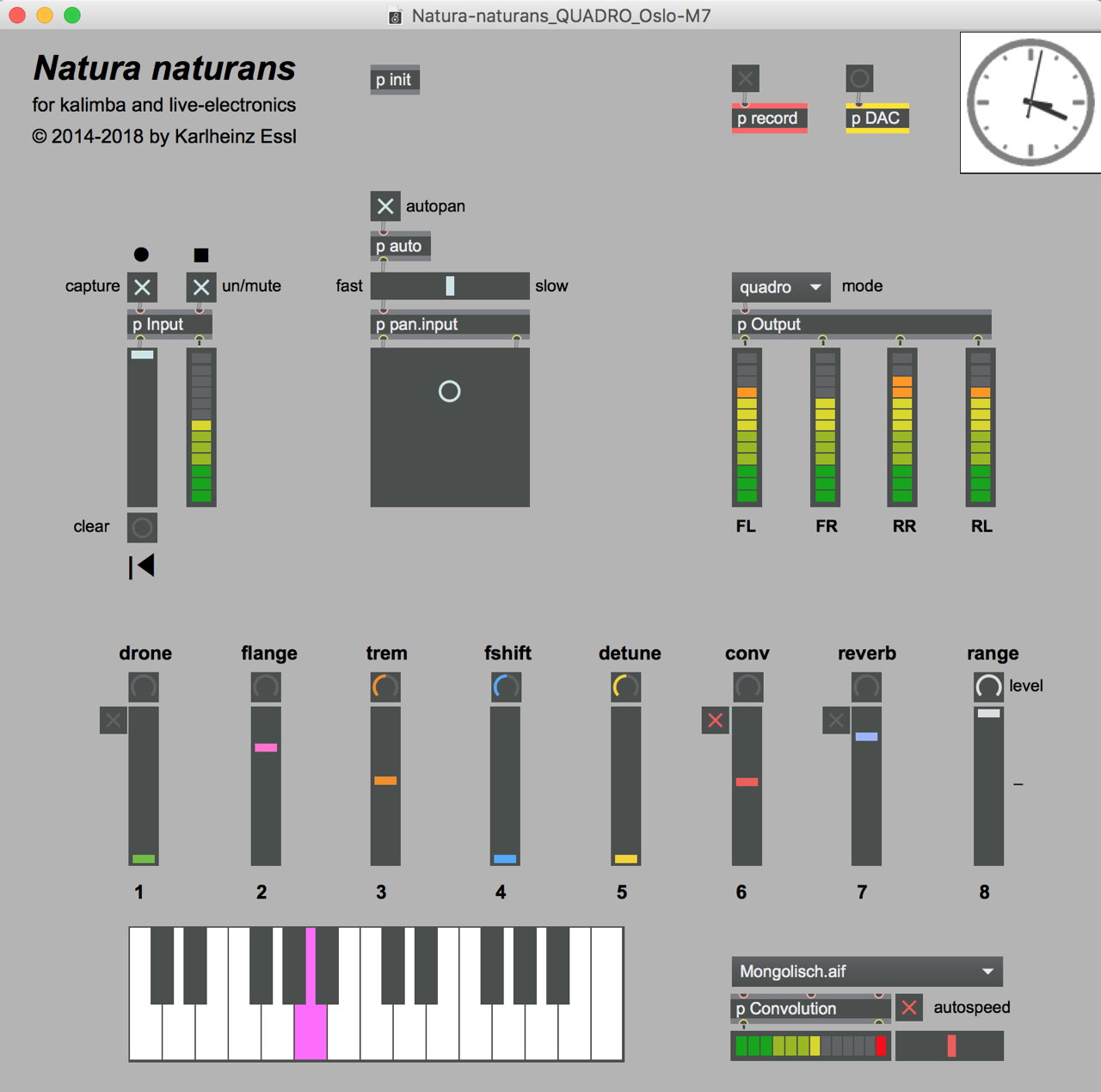Natura naturans
realtime composition for prepared kalimba, live-electronics and surround sound2014-2018
Basics | Performances | Listen | Watch
Basics | Performances | Listen | Watch

Using an African kalimba as a tactile input controller, Natura naturans evolves like an organic fabric of sounds which constantly transforms itself. The cryptic title refers to Baruch Spinoza's concept of „natura naturans” where nature creates itself – in opposition to „natura naturata” where nature is controlled by external forces. Spinoza's thoughts – also spoken by a computer voice in Latin – served as the initial spark for this composition which expresses artistic ideas of self-organisation (auto-poïesis), controlled randomness, and the unforeseeable. Sound becomes nature becomes sound.Originally, this project started 2014 as a collaborative project with the German sound artist Michael Ammann. In an attempt to create a realtime sonification of a metal sculpture by Barbara Szüts (displayed at the Essl Museum in Klosterneuburg at this time), both composers developed their own electronic instruments which use an instrumental resp. vocal live input as its basic source: his own voice in Michael Ammann's setting, whereas Karlheinz Essl utilizes a kalimba which he played in a highly unconventional way. In this setting, the first rendering of this concept was performed during an improvisation concert on August 27, 2014 where both artitst met for the first time in their life.
Shortly after the concert, Karlheinz Essl began to extend his software instrument in order to be used in his future solo performances.

natura naturans - graphical user interface
© 2014-2018 by Karlheinz Essl
Natura naturans performed by Karlheinz Essl
Norges Musikkhøgskole, 26 Oct 2014
Binaural recording - use headphones to enjoy the surround sound!
Natura naturans (solo version) performed Karlheinz Essl
Royal Conservatory The Hague, 26 Nov 2014
Natura naturans (excerpt) performed by Michael Ammann and Karlheinz Essl
Essl Museum Klosterneuburg, 27 Aug 2014
Natura naturans (excerpt) performed by Michael Ammann and Karlheinz Essl
Essl Museum Klosterneuburg, 27 Aug 2014
| Home | Works | Sounds | Bibliography | Concerts |
Updated: 24 Aug 2021